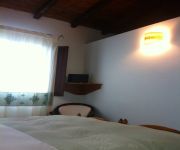Facts and Data
Webpages:
Official Unesco Page
Su Nuraxi di Barumini
Basis Data:
Unesco World heritage since: 1997
Size of heritage: 2.33 ha
- Buffer zone: 3.92 ha
Coordinates:
Longitude: 8,991°
Latitude: 39,706°
Summary
During the late 2nd millennium B.C. in the Bronze Age, a special type of defensive structure known as nuraghi (for which no parallel exists anywhere else in the world) developed on the island of Sardinia. The complex consists of circular defensive towers in the form of truncated cones built of dressed stone, with corbel-vaulted internal chambers. The complex at Barumini, which was extended and reinforced in the first half of the 1st millennium under Carthaginian pressure, is the finest and most complete example of this remarkable form of prehistoric architecture.
Location on Map
Show bigger map on Openstreetmap
Su Nuraxi di Barumini: A UNESCO World Heritage Site in Italy
Su Nuraxi di Barumini is a remarkable archaeological site located in the Province of Medio Campidano, Sardinia, Italy. Designated as a UNESCO World Heritage site in 1997, it is one of the most important and well-preserved examples of nuraghe, ancient megalithic structures unique to Sardinia.
History
The origins of Su Nuraxi di Barumini can be traced back to the Bronze Age, around the 16th century BCE. The site was initially a simple tower-like structure, but over time, it evolved into a complex fortified village. The nuraghe, which gives the site its name, is a central tower surrounded by a labyrinthine network of smaller towers, chambers, and courtyards.
The purpose of these structures is still debated among archaeologists. Some theories suggest that they served as defensive fortifications, while others propose that they were religious or ceremonial centers. Regardless of their original function, the nuraghe played a significant role in the social, economic, and political life of the ancient Nuragic civilization.
After centuries of occupation, Su Nuraxi di Barumini was abandoned and forgotten until its rediscovery in the 1950s. Extensive excavations and restoration work began in the 1970s, led by archaeologist Giovanni Lilliu. His efforts revealed the complex architectural design and intricate masonry techniques employed by the ancient builders.
Current State
Today, Su Nuraxi di Barumini stands as a testament to the ingenuity and craftsmanship of the Nuragic civilization. The site covers an area of approximately 2.5 hectares and consists of a central tower surrounded by four smaller towers, connected by thick defensive walls. The complex also includes a courtyard, living quarters, and a well.
Visitors to Su Nuraxi di Barumini can explore the site through a guided tour, which provides insights into the history, architecture, and daily life of the Nuragic people. The tour takes visitors through the labyrinthine corridors and chambers, offering a glimpse into the past and the opportunity to appreciate the impressive construction techniques employed by the ancient builders.
The site is well-preserved, thanks to ongoing conservation efforts. The use of traditional building materials and techniques ensures that the original structures remain intact. The surrounding landscape, with its rolling hills and Mediterranean vegetation, adds to the site's charm and historical ambiance.
Su Nuraxi di Barumini is not only a significant archaeological site but also a symbol of Sardinia's rich cultural heritage. Its inclusion on the UNESCO World Heritage list has helped raise awareness about the Nuragic civilization and its contributions to ancient European history.
Overall, Su Nuraxi di Barumini is a must-visit destination for history enthusiasts, archaeology lovers, and anyone interested in exploring the mysteries of the past. Its unique architectural design, historical significance, and stunning surroundings make it a truly remarkable UNESCO World Heritage site.
Hotels and places to stay
Su Nuraxi Hotel
Videos from the area
Videos provided by Youtube are under the copyright of their owners.







